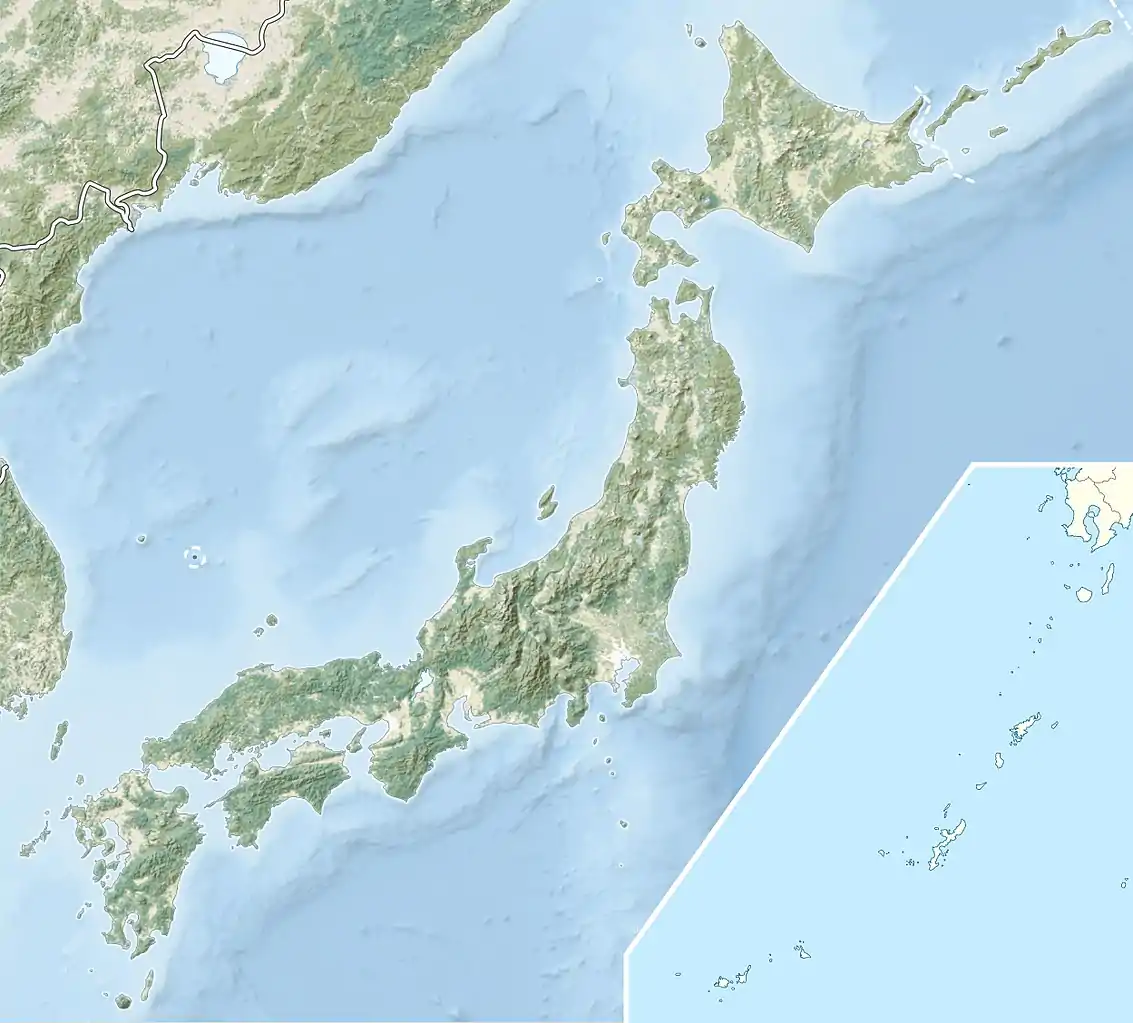Akahogi Tile Kiln Site
Akahogi Tile Kiln site (赤保木瓦窯跡, Daikichiyama Kawara Kama-ato) is the remains of a late Nara period, early Heian period roof tile and pottery production site located in what is now the city of Takayama, Gifu Prefecture in the Chūbu region of Japan. It has been protected by the central government as a National Historic Site since 1976.[1]
赤保木瓦窯跡 | |
 Akahogi Tile Kiln Site  Akahogi Tile Kiln Site (Japan) | |
| Location | Takayama, Gifu, Japan |
|---|---|
| Region | Chūbu region |
| Coordinates | 36°09′39″N 137°13′11″E |
| History | |
| Periods | late Nara to early Heian period |
| Site notes | |
| Ownership | National Historic Site |
| Public access | Yes |
Overview
The site is located in the northwestern part of Takayama city area, and contained the ruins of six kilns within a range of approximately 70 square meters. The kilns consists of four semi-underground anagama kilns with a length of approximately 8 meters and two semi-underground noborigama-type climbing kilns. The former were used for the production of roof tiles, and the latter for Sue pottery. From the ruins of the tile kilns, shards of various types of roof tiles were discovered, including round tiles for use on eaves, flat tiles, corner tiles and Onigawara tiles, all of which are identical to shards found at the site of the Hida Kokubun-ji provincial temple established in the Nara period.
The tile kilns are almost identical in structure: The No. 1 kiln has a total length of 8.34 meters, a width of 0.75 meters, and contains 16 steps. It appears to have been repaired twice, but most of the firing chamber has been lost due to a landslide. The No. 2 kiln has a total length 9.38 meters, a width 1.08 meters. Although the ceiling has completely survived, it appears to have been abandoned at an early date. It has been repaired four times, and the number of steps is currently unknown. The No. 3 kiln has a total length of 8.14 meters and a width of 0.70 meters. The firing chamber has 6 stages and the width of each step is wide, which is different from the others. It has been repaired three times. The No.4 kiln is located on the lowest portion of the hill, and has a width of 1.0 meter. The ceiling part is completely intact, but the kiln itself remains unexcavated.
The Sue pottery kilns are labelled No.5 and No.6 and were in continuous use until into the Kamakura period.
References
- "赤保木瓦窯跡". Cultural Heritage Online (in Japanese). Agency for Cultural Affairs. Retrieved 25 December 2016.
External links
- Gifu Prefecture official site (in Japanese)
- Takayama city official site(in Japanese)